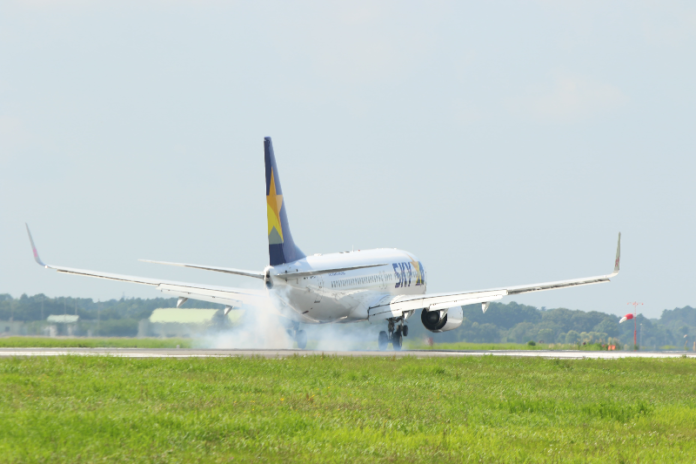The way that the aviation sector is working to reduce its climate impact may need to be reconsidered, climate researchers at Manchester Metropolitan University suggest.
A new report by climate scientists at the University suggests it may be more beneficial for regulations to focus on improving fuel efficiency and reducing carbon dioxide (CO2) emissions, rather than current regulation standards which focus on reducing nitrogen oxides (NOX ) – gasses produced from the reaction of nitrogen and oxygen.
CO2 is a well-known greenhouse gas, which is one of the major causes of global warming. Emissions of NOX can result in both warming from atmospheric reactions to form ozone (O3) – a harmful air pollutant – and cooling from the destruction of ambient methane (CH4) – one of the most harmful of the greenhouse gases. In the present-day NOX has an overall warming effect.
The International Civil Aviation Organization’s standard for the regulation of aircraft engine NOX emissions were introduced to offset the growth of the environmental impact of air transport, to protect local air quality and subsequently improve climate impact.
But an analysis by Manchester Met, published in the journal Nature Communications, say that this is not necessarily the right direction when looking to reduce climate impacts of aviation as a whole in the future.
Dr Agnieszka Skowron, lead researcher and Research Associate in the University’s Aviation and Climate Research Group, said: “We acknowledge the necessity to reduce aircraft NOX emissions for local air quality benefits, but from a climate benefit point of view, we suggest any vision of more stringent NOX regulations need to be revisited.
“Our research suggests that warming effects of CO2 have a much more long-lasting and detrimental effect on climate than NOX, and due to a trade-off between the two gasses, which means reducing one results in an increase in the other, it might be more worthwhile to concentrate on CO2 reduction.”
A decrease in NOX emissions means an increase in fuel usage for aircrafts – therefore an increase in CO2. CO2 emissions provide the majority of the long-term warming effects from aviation and a smaller change to these emissions has a much bigger impact on the overall warming effect of the planet than an equivalent change in NOX emissions, depending on the time frame considered.
Dr Skowron added: “NOX emissions from aircrafts has the strongest temperature response within the first year of being released and weakens thereafter. In the current climate, after around 15 years, the warming effect of the emissions actually change to cooling and will disappear completely after around 60 years.
“However, CO2 emissions have a constant warming effect, with levels of the gas still present in the atmosphere after 100 years, and continues to have the same detrimental warming properties as it did when first released.
“We also found the impact of NOX from aircraft is also very sensitive to the gases already in the atmosphere or emitted from elsewhere. So a cut in the NOX emissions coming from sources on the ground, also affects the impact of NOX emissions coming from aviation – even helping to cool, rather than warm, the atmosphere. This is a completely new finding and one that shows how cutting NOX emissions from sources on the ground can help reduce the impact of NOX emissions from aviation.”
For future studies, the research team suggest that scientific evidence for reducing aircraft NOX needs to be revisited.







